You’re lured into the ‘freemium’ model, thinking it’s a surefire way to business growth. But, have you considered its hidden costs?
It’s time you understood how this attractive model can be a trap stunting your revenue growth. Let’s dive deep into real strategies that drive profits and explore successful transitions from freemium to premium.
Brace yourself; it’s time to debunk the freemium myth and navigate towards true financial success.
Table of Contents
ToggleUnderstanding the Concept of Freemium
Let’s delve into understanding the concept of freemium and see why it’s often seen as a trap by many businesses.
Freemium’s origins trace back to the early 1980s, with the advent of software companies. They offered a basic version of their product for free, while premium features were locked behind a paywall. This model enabled them to attract users who might not have been willing to incur an upfront cost.
Freemium’s future hinges on how businesses adapt this strategy in a more sustainable way. The trap lies in its potential pitfalls – it can lead to revenue stagnation if too many users opt for the free version and don’t convert to paying customers. In essence, you’re banking on conversion rates that may not materialize.
However, don’t discard freemium just yet! With data-driven strategies and careful market segmentation, it is possible for businesses to strike a balance between attracting new users and encouraging upgrades. For instance, offering tiered pricing structures or time-limited trials can nudge users towards paid versions once they’ve experienced its value first-hand.
Ultimately, understanding freemium requires insight into both its origins and potential future trajectories – keeping in mind its inherent challenges along the way.
Why Freemium Can Be a Trap
You might think offering free services with optional paid features is a winning strategy, but it’s important to consider the potential pitfalls.
This model, known as freemium, presents its own set of challenges regarding sustainability and limitations.
Freemium sustainability relies heavily on converting enough free users into paying customers. However, this conversion rate typically hovers around a low 2-5%. That means you’re potentially supporting a large user base with only a small percentage contributing to your revenue.
Moreover, freemium limitations are clear when considering customer behavior. Many users may become accustomed to using the free version and see no need to upgrade. They’ve already gained access to your service and unless they perceive significant value in premium features, they’ll likely stick with what’s free.
Furthermore, there’s always the risk of devaluing your product or service. If people can get it for free, will they ever perceive it as valuable enough to pay for?
The Hidden Costs of Freemium Models
There’s more than meets the eye when it comes to the hidden expenses of offering free services with optional paid features. You might see this as a lucrative strategy, but what you don’t realize is how Freemium sustainability becomes an uphill battle due to hidden operational expenses.
These costs can sneak up on you in various forms. First, there’s the cost of developing and maintaining your platform. It’s not just about creating an attractive product; you have to ensure its smooth operation for both free and premium users. This requires continuous updates, bug fixes, server maintenance – all adding up to significant costs.
Then consider customer support. Free users may not bring in revenue directly, yet they demand equal service quality as paying customers do. This means hiring more support staff or investing in tools that automate customer service processes.
Furthermore, marketing costs can skyrocket as you try to convert free users into paying ones – a task easier said than done.
Real Revenue Growth Strategies: An Overview
It’s essential to explore various strategies that can boost a company’s earnings, instead of solely relying on freemium models. One such strategy is the implementation of Subscription models. This approach ensures a consistent flow of income, as customers pay regular fees for continued access to your product or service.
Subscription models offer you the benefit of predictable revenue and customer loyalty. You’ll find it easier to project future earnings and plan accordingly when you’ve got a steady stream of subscriptions coming in. Plus, customers who subscribe are likely more invested in your brand, providing opportunities for upselling and cross-selling.
Revenue diversification is another key strategy to consider. Don’t put all your eggs in one basket; instead, diversify by exploring different income streams – advertising, partnerships, licensing deals, or selling related products or services. This not only increases overall revenue but also reduces risk; if one source performs poorly, others can compensate.
However, you must balance diversification with focus; don’t dilute resources too much across multiple initiatives. Evaluate each potential revenue stream carefully for alignment with your brand and profitability potential before diving in.
Remember: every business is unique – what works for others might not work for you. Always strive to discover what resonates best with your market and business model.
The Power of Value-Based Pricing
Harnessing the power of value-based pricing can significantly boost your profitability. Customers are often willing to pay more for products they perceive to have higher worth. It’s a strategy rooted in the psychology of pricing, where perceived value and quality outweigh mere cost considerations.
When you set prices based on the value your product or service delivers, it creates a psychological pull towards purchase. Customers don’t just see a price tag; they see an investment that’ll return dividends in terms of benefits and satisfaction.
But implementing this strategy isn’t about arbitrarily assigning high prices; it requires deep understanding of your market and customers’ needs. You’ve got to strike that sweet spot where customers feel they’re getting their money’s worth.
Competitor analysis is crucial here. By understanding how competitors price similar offerings, you can better gauge where your product stands in terms of market perception and value proposition. If you’re offering more value but charging less, you’re leaving money on the table.
Remember: Pricing isn’t just a numbers game; it’s a psychological one too. A well-executed value-based pricing strategy can be key to driving real revenue growth beyond freemium models.
Role of Customer Acquisition in Revenue Growth
You’ve got to understand that customer acquisition plays a pivotal role in increasing your company’s earnings. It’s not just about attracting new customers; it’s about acquiring the right ones. This is where Acquisition Analytics steps in, helping you analyze and identify profitable customer segments.
By leveraging data from Acquisition Analytics, you can tailor your marketing strategies to target those potential customers who are most likely to convert and bring high lifetime value. A detailed analysis of customer behavior, preferences, and engagement patterns will help you craft personalized marketing campaigns that resonate with your target audience.
Social Media Outreach is another effective tool for customer acquisition. Today’s digital-savvy consumers spend considerable time on social media platforms. So, engaging them where they already are increases chances of conversion.
But remember, it’s not enough to merely be present on these platforms; the content must be both compelling and relevant. You’ll need strategic planning and execution of your Social Media Outreach efforts for them to yield desired results.
Leveraging Customer Retention for Increased Profits
Having grasped the role of customer acquisition in revenue growth, it’s essential to not overlook another vital aspect – customer retention. It’s not enough to merely attract new customers; you have to ensure their loyalty through effective churn management and loyalty programs.
Churn management is a systematic approach aimed at minimizing the number of customers who discontinue their use of your product or service. You must closely monitor your churn rate, as it directly reflects on your business’ health. Successful churn management isn’t just about retaining existing customers; it also involves understanding why they might leave and addressing these issues proactively.
On the other hand, loyalty programs can serve as an efficient tool for increasing customer retention. By offering rewards for repeated purchases or long-term commitment, you’re encouraging customers to stick around. Remember though, your loyalty program shouldn’t be a one-size-fits-all strategy; instead, tailor it based on individual customer behavior and preferences.
When effectively managed, both churn management and loyalty programs can significantly bolster your profits by reducing costs associated with acquiring new customers and increasing sales from loyal ones. Thus, mastering these strategies can play a pivotal role in achieving sustainable revenue growth.
Case Studies: Successful Transition From Freemium to Premium
Let’s now delve into some examples of businesses that have effectively transitioned from a free to paid model, thereby boosting their profitability. The Premium Transition Challenges faced by Spotify and Evernote are two noteworthy cases.
Spotify, the music streaming service, initially offered unlimited free access to its library. Facing mounting royalty costs, it introduced a premium subscription. This was risky because of potential user backlash against paying for previously free features. However, Spotify managed this transition by offering compelling extra benefits such as ad-free listening and offline play in its premium package.
Evernote also transitioned successfully from freemium to premium with an emphasis on Freemium to Premium Success Factors like superior functionality and exclusive features for paid users. They faced challenges in convincing users about the additional value they’d receive by upgrading. By focusing on business customers who needed advanced productivity tools, Evernote convinced subscribers that going premium was worthwhile.
In both cases, the companies made clear what customers gained by upgrading: enhanced services or features not available in the free version. Their success underscores the importance of strategic planning and customer communication during the transition phase from freemium to premium models.
Conclusion
You’ve seen how the freemium model can be a trap, with hidden costs that may stunt your revenue growth. But there’s hope!
By adopting strategies like value-based pricing and focusing on customer acquisition and retention, you can drive real profit growth.
Remember, it’s all about providing value to your customers – that’s the key to transitioning from freemium to premium successfully.



